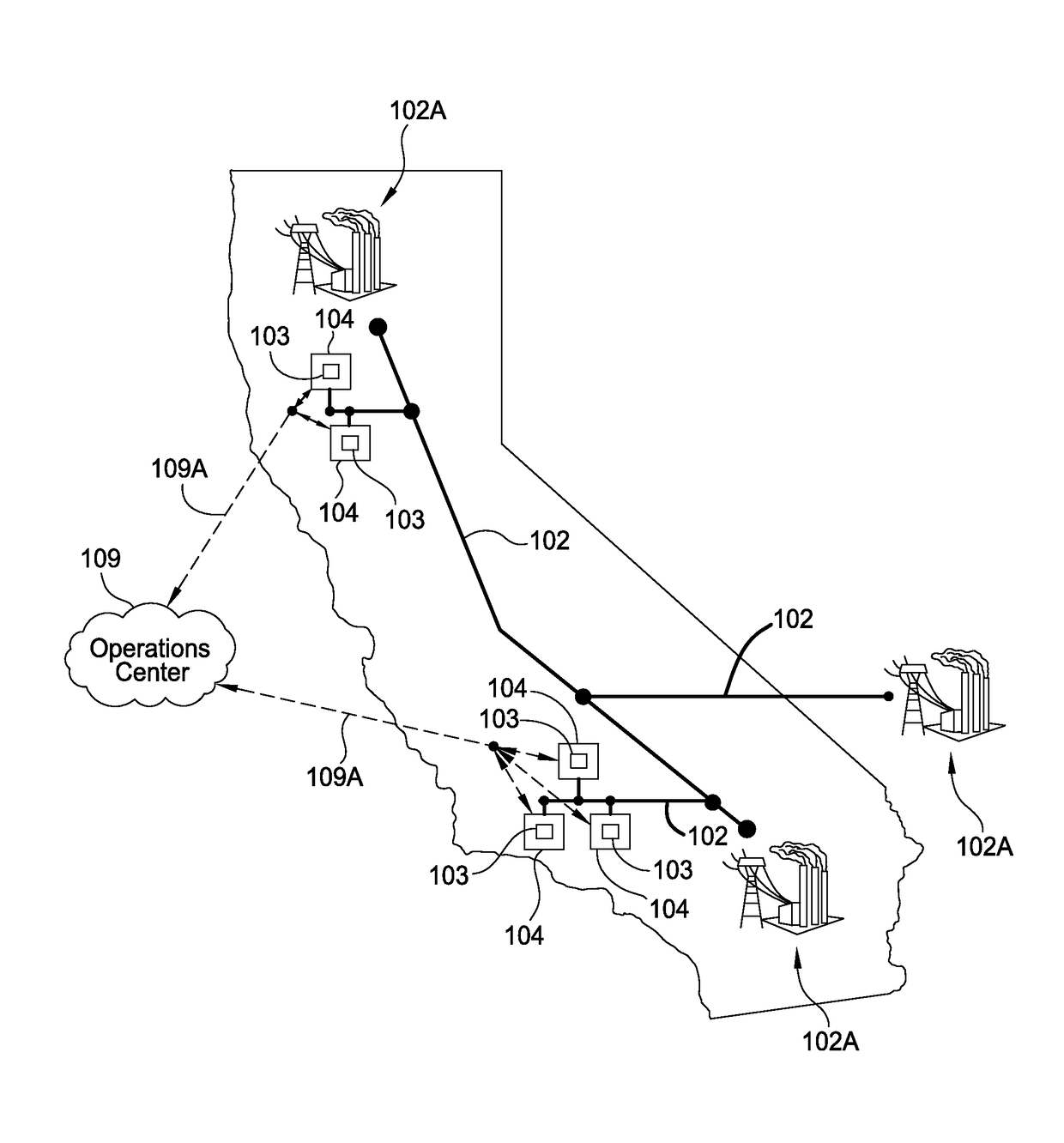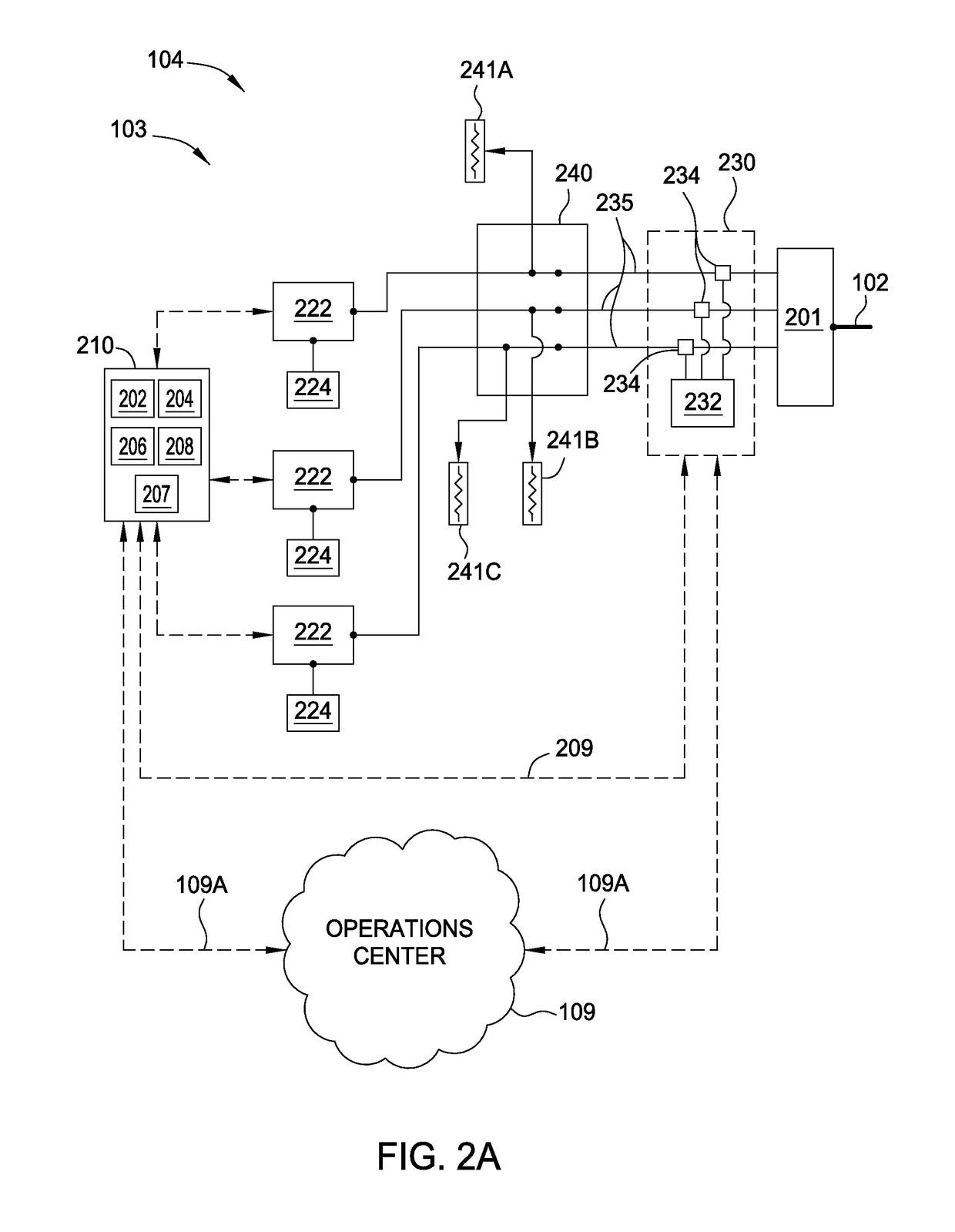Method for balancing frequency instability on an electric grid using networked distributed energy storage systems
a technology of energy storage system and frequency instability, which is applied in the integration of power network operation system, load forecasting in ac network, transportation and packaging, etc., can solve the problems of high energy cost for users, high cost for energy storage medium, and high cost for utilities for generating or purchasing electrical energy
- Summary
- Abstract
- Description
- Claims
- Application Information
AI Technical Summary
Benefits of technology
Problems solved by technology
Method used
Image
Examples
Embodiment Construction
[0045]Embodiments of the present invention include control methods employed in multiphase distributed energy storage systems that are located behind utility meters typically located at, but not limited to, medium and large commercial and industrial locations and / or are connected along various parts of an electric grid. These distributed energy storage systems can operate semi-autonomously, but each may be in frequent contact with a cloud-based optimization engine that is configured to develop energy control solutions based on various data inputs and to communicate these energy control solutions to the distributed energy storage systems. Each installed distributed energy storage system can be used to monitor or receive information about the electricity use at its specific location and information relating to the power transmission on the electric grid. In an effort to control the local demand, the distributed energy storage system can discharge at times of high demand peaks in order ...
PUM
 Login to View More
Login to View More Abstract
Description
Claims
Application Information
 Login to View More
Login to View More - R&D
- Intellectual Property
- Life Sciences
- Materials
- Tech Scout
- Unparalleled Data Quality
- Higher Quality Content
- 60% Fewer Hallucinations
Browse by: Latest US Patents, China's latest patents, Technical Efficacy Thesaurus, Application Domain, Technology Topic, Popular Technical Reports.
© 2025 PatSnap. All rights reserved.Legal|Privacy policy|Modern Slavery Act Transparency Statement|Sitemap|About US| Contact US: help@patsnap.com



